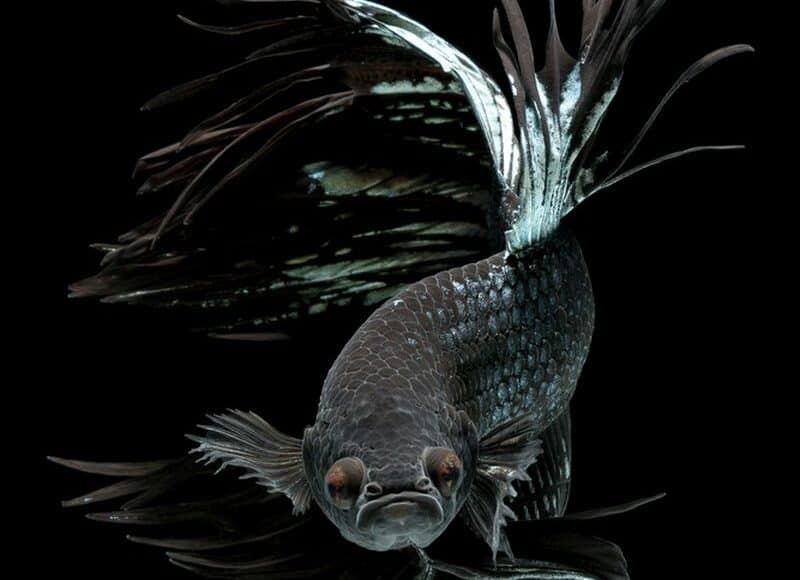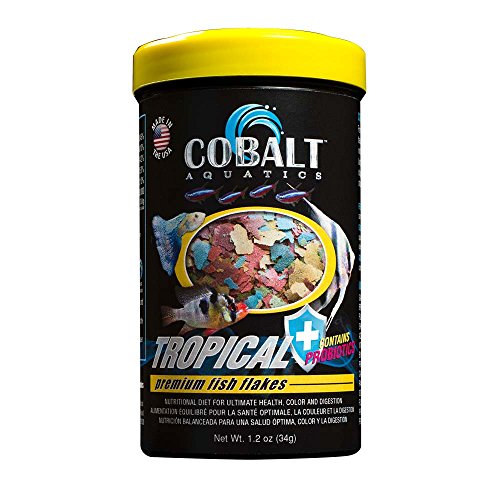Last Updated on June 23, 2022
Ever wondered what it’s like to take care of a betta fish? You’re not alone.
At times, a betta fish might seem like just another small pet. They’re easy to care for and come in various colors which makes them popular among aquarium enthusiasts! They can be black, red, blue, or even pink-hued but in this post, we will focus on how to take care of the most beautiful and rare of these colors: the black orchid crowntail betta.
Table of Contents
Black orchid crowntail betta fish care sheet
| Minimum Tank Size: | 5 Gallons |
| Diet: | Carnivore, Protein-rich diet |
| Average Lifespan: | 3-5 years |
| Size: | Approximately 2.5-3 inches |
| Disease: | The common ones include popeye, fin rot, fin infection, and bacterial infection from leftover food |
| Decorations: | Plants and toys |
| Tank Maintenance: | Weekly partial water renewal with a water temperature of 72 to 82 Fahrenheit (22.2 – 27.8 Celcius) |
What are betta splendens?
Usually, the bettas that you see in fish stores and online aquarium shops that comes in variety of color is called the betta splendens. They are a domesticated species of betta fish that were typically bred by betta enthusiasts.
There is a long and complicated history behind these beautiful fish. They have been bred in their native regions for hundreds of years for their fighting ability and aggression. Because of this, they were not given the nickname “Siamese Fighting Fish” for no reason.
With its many variations we can’t be sure if these are subspecies or varieties but they mean essentially the same thing when applied to fancy betta fish like yours!
What is a black orchid betta fish?
You can’t help but be drawn to the beauty and coloration of a black orchid betta. Its dark colors and beautiful iridescence are like nothing you’ve ever seen before, truly unique in all its splendor.
A black orchid betta’s iridescence is not exclusive to its fins. In most cases, a high proportion of them will also develop an additional red color in their scales which can be attributed to the marble gene as well.
Black orchid crowntail betta

The black orchid crowntail betta is a popular variation of this type of breed that’s common among aquarium enthusiasts. Male bettas have an eight-inch caudal fin with extensions- three times the size of their body!
The term was coined by breeder Henry Yin when he developed this type of bi-color crowntail bettas with an excess amount of steel blue on their fins that looked almost butterfly-shaped from afar – henceforth known as black orchid crowntail betta!
More varieties
Bettas appear to have a slightly dark body that can also include an iridescent overtone. Some bettas are crossed with marble-patterned varieties, which give them a metallic or red tone on their bodies and fins. The black devil variety is derived from black orchid betta crosses while the black ice comes from crossbreeding this fish with other ornamental breeds of betta such as crowntails, plakats, veil tails, and marbles.
Black devil betta
A black devil betta is a rare variety that’s difficult to breed. What makes them so special, though? Well for starters they have a marble-type black body with red fins instead of the typical iridescence found in the black orchid.
Black ice betta
This betta species on the other hand is a different type of black than the more common marble strain. It’s been selectively bred to produce almost all-black offspring, but it still doesn’t breed true at this time.
This betta species have iridescence that varies from green, steel, or royal color which makes for an interesting fish that really stands out from others with just one glance!
Care for betta fish: Frequent questions

Your fish’s environment matters to make sure that they are thriving. To ensure their safety and well-being, here is a list of guides on how to take care of your betta’s needs:
Are bettas tropical or freshwater fish?
Is my aquarium fish tropical or freshwater?
Betta splendens are considered tropical fish which is why one of the many misconceptions about bettas is that they don’t need a water heater or filtration system. In fact, betta species are very sensitive to their water conditions and need to live in water temperatures between 22°C and 27°C.
You’ll want to be sure your aquarium fish have a heater if your home isn’t this warm, but it’s worth investing in this because these little guys can die at temperatures below 21°C.
Related: How to Warm Up a Betta Tank Without a Heater?
A water filter should also be used even though wild bettas live in murky puddles and rice paddies. Not having a filter can make their habitat toxic if waste materials accumulate without being filtered out.
Higher-flow filters may damage your pet’s fins so it’s important when selecting one with this consideration in mind! The best filters for your fish should use gentle water flow as they do not want strong currents due to their delicate fins.
What to feed your betta fish?
Give your betta fish flakes or pelleted food 1-2 times per day. Bettas are carnivores, so make sure to give them freeze-dried or frozen food such as brine shrimp and blood worms for a well-balanced meal!
- All Natural Protein Blending together premium wild sword prawns and Akiami paste shrimps (up to 50% of total content), this formulation is abounds with natural calcium and energized with a wealth of carefully selected ingredients like organic spinach, fresh squid, fresh-pick garlic, natural spirulina and seaweed. Its sure to help those picky show-grade fighting fish to develop the perfect body and natural colors.
- Premium Wild Sword Prawns Sword Prawns features a strong and unique taste that tops all other shrimps, making them the top choice by Michelin Restaurants. This food is simply irresistible to picky bettas.
- Great Granule Size for Bettas With the 1.5mm Granule, it is very for betta fish to consume and leaves the water clear for easier maintenance.
- Super Betta Food Its not only tasty, but it also keeps betta fish healthy! Our food is jam-packed with vitamins (A, C, D3, E, B1, B2, B6, B12) great for reaching full potential in size, color, fins, and A+ immunity!
- 3 Million CFUs/g Probiotics 3 million CFUs/g probiotics are within our food to automatically help dissolve fish excrements, residuals and keeps water clean. Other than that it helps fish to fully absorb nutrition, help to excretion, enhance the immune system and lower the risk of digestive proble
Prices pulled from the Amazon Product Advertising API on:
Product prices and availability are accurate as of the date/time indicated and are subject to change. Any price and availability information displayed on [relevant Amazon Site(s), as applicable] at the time of purchase will apply to the purchase of this product.
- Blue Flake (Triple Vitamin Boost, Natural Immunostimulant Beta-Glucan And Chitosan)
- Enhanced With Probiotics (Bacillus Sp) To Improve Digestion And Intestinal Wellbeing
- Less waste (cleaner aquarium)
- Ingredients Sourced From Us And Canada
- Made In The Usa
- Included Components: Fish F
Prices pulled from the Amazon Product Advertising API on:
Product prices and availability are accurate as of the date/time indicated and are subject to change. Any price and availability information displayed on [relevant Amazon Site(s), as applicable] at the time of purchase will apply to the purchase of this product.
It is important to feed them small meals at least twice per day, or they will get constipated and bloated which is a real headache and common problem for a betta!
Related: Best Food for Betta Fish to Keep it Full and Well
Do you need a small or big tank size?
When you purchase a betta fish, it is important to consider the size of their tank. It can be tempting for some people to buy them bowls or vases at stores because they are small and compact but this would not provide enough space!
Your black orchid crowntail betta needs plenty of room so make sure that you give them at least a 5-gallon tank before bringing your new pet home from the store.
- SLEEK DESIGN: Rounded corners and clear glass canopy allow viewing from multiple angles.
- DAYLIGHT/MOONLIGHT LIGHTING: Bright white LEDs create a shimmering sunlight effect; blue LEDs produce a moonlit glow.
- EASY ACCESS: Hinged LED lighting and sliding glass canopy.
- SIZE: 5-gallon aquarium fits Marineland Rite-Size Z Filter Cartridges.
- HIDDEN FILTRATION: Advanced, 3-stage filtration is out of sight, enhancing aquarium viewi
Prices pulled from the Amazon Product Advertising API on:
Product prices and availability are accurate as of the date/time indicated and are subject to change. Any price and availability information displayed on [relevant Amazon Site(s), as applicable] at the time of purchase will apply to the purchase of this product.
Your fish needs to be fed on the surface of the water because it has a labyrinth organ that allows them to breathe air on the surface. Their fins would tire out if they had to reach for the top, so you need a shallow tank for these guys!
Related: Fish Tanks for Beginners: Everything You Need to Know
What to put in your fish tank?
Decorating your tank with accessories will help keep your betta splendens interested when you’re away; making life easier for inquisitive creatures like your little orchid betta.
Here are suggestions on what you could place in your fish tank:
- Cover the bottom of your tank with a layer of gravel (1-2 inches). Be sure to rinse it before placing it in the tank!
- Fill the tank with dechlorinated water halfway up.
- Place some décor like live plants or rocks. Adding toys will also surely increase your betta’s happiness.
- Fill up the tank with water and make your way out before you forget anything!
Common health issues
Bettas are prone to diseases and illnesses like other pets, but some things can trigger them. For instance, bettas with poor water quality or low heat may experience usually rare afflictions such as necrosis (“mystery rot”).
If you notice your fish behaving strangely around the tank floor make sure to check on that for sure! With just one quick change in their environment there’s no telling what might happen next; maybe they’ll go from sickly pale to healthy overnight if all goes well.
The following is a list of common illnesses and diseases that may befall your betta fish:
- Fin rot – The base of the fins is usually red due to the fraying or disintegrating of fins.
- Fungus – White, cotton-like growth and/or discoloration of the eyes.
- Bacterial infections – Reddening of the skin, open sores, and/or cloudy eyes.
- Ich – Fish rubbing against objects due to white spots appearing on fins and body. Swimming awkwardly and rapid respirations are also other symptoms.
Related: 10 Betta Fish Diseases and Symptoms (and How to Treat Them)
Taking care of betta splendens
If you are considering adding a betta fish to your home, then the black orchid crowntail betta is likely the perfect choice for you. This beautiful fish stands out from other bettas due to its unusual coloring; black on top with an orange-red tail that gives it an interesting look.
They are known for their sensitivity to water conditions which means you might want to take better care of your betta than some other types of fish! The black orchid crowntail betta can be cared for like any other standard betta such as:
- Good quality food with high protein content is necessary for proper growth and health.
- Warm water temperature should ideally fluctuate between 22.2 – 27.8 Celcius (72 to 82 Fahrenheit).
- Keep their tank clean by doing regular partial water changes.
- Make sure they have plenty of oxygenated water (over 50%) at all times.
Related:



